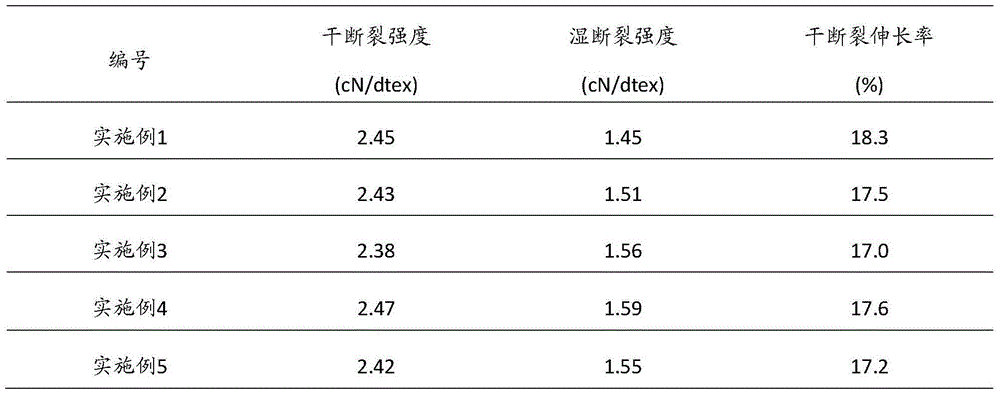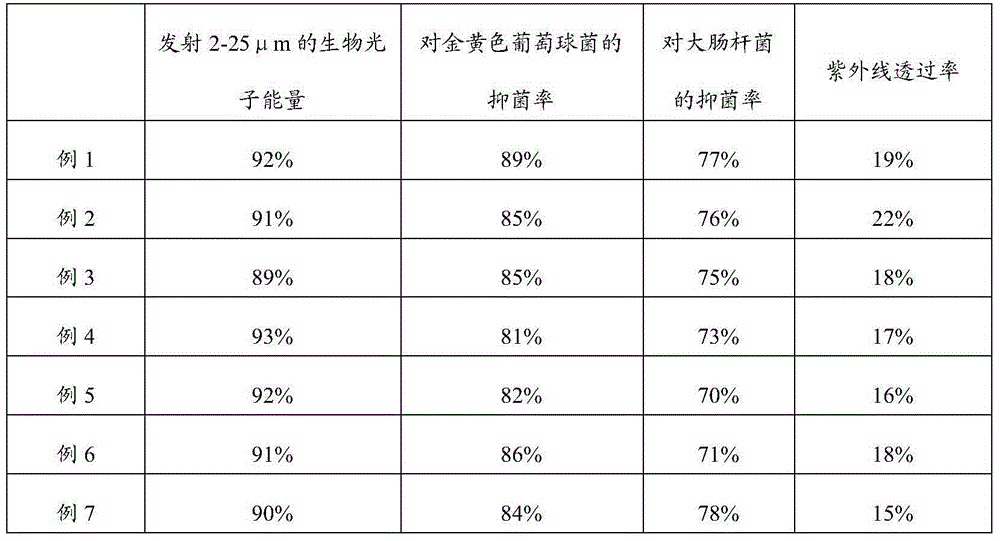Preparation method of flax-viscose-mint fiber and sock
A technology of mint fiber and viscose fiber is applied in the textile field, which can solve the problems of low economic benefit, low price, and large market price fluctuation, and achieve the effects of cool and comfortable wearing, increased health care function, and improved performance.
- Summary
- Abstract
- Description
- Claims
- Application Information
AI Technical Summary
Problems solved by technology
Method used
Image
Examples
Embodiment 1
[0027] Put 15 kg of hemp pulp with an average degree of polymerization of 450, a cellulose content of 92%, an ash content of 0.14%, an iron content of 20 ppm, and a whiteness of 79% into the dipping poke, and soak it at 95°C for 20 minutes. Use alkali 220g / L; press, pulverize and cool the impregnated hemp pulp to obtain alkali cellulose; put the alkali cellulose into a yellowing machine for yellowing, the initial yellowing temperature is 21℃, and the final temperature is At 28°C, the amount of carbon disulfide is 38% of the hemp pulp. After 70 minutes of yellowing, add bamboo charcoal peppermint oil and mix, control the addition of bamboo charcoal peppermint oil to 0.05% of the mass percentage of the fiber, and finally dissolve, mix, defoam, and Filtration and maturation to obtain the spinning glue solution; put the spinning glue solution into the spinning machine, compose an acid bath at a ratio of 120g / L sulfuric acid, 320g / L sodium sulfate, and 13g / L zinc sulfate. The serici...
Embodiment 2
[0030] Put 15kg of hemp pulp with an average degree of polymerization of 410, a cellulose content of 90%, an ash content of 0.13%, an iron content of 20ppm, and a whiteness of 78% into the dipping poke, and dipping at 90°C for 25 minutes. Use alkali 225g / L; press, crush and cool the impregnated hemp pulp to obtain alkali cellulose; put the alkali cellulose into a yellowing machine for yellowing, the initial yellowing temperature is 25°C, and the final temperature is At 24°C, the amount of carbon disulfide is 39% of the hemp pulp, after 75 minutes of yellowing, add bamboo charcoal peppermint oil and mix, control the addition of bamboo charcoal peppermint oil to 0.06% of the mass percentage of the fiber, and finally dissolve, mix, defoam, and Filtration and maturation to obtain the spinning glue solution; put the spinning glue solution into the spinning machine and compose an acid bath at a ratio of 122 g / L sulfuric acid, 325 g / L sodium sulfate and 14 g / L zinc sulfate to perform t...
Embodiment 3
[0033] Put 16kg of hemp pulp with an average degree of polymerization of 460, a cellulose content of 95%, an ash content of 0.11%, an iron content of 25ppm, and a whiteness of 81% into the dipping poke, and soaking at 95°C for 30 minutes. Use alkali 210g / L; press, pulverize and cool the impregnated hemp pulp to obtain alkali cellulose; put the alkali cellulose into a yellowing machine for yellowing, the initial yellowing temperature is 25℃, and the final temperature is 25℃, the amount of carbon disulfide is 40% of the hemp pulp, after 75 minutes of yellowing, add bamboo charcoal peppermint oil and mix, control the adding ratio of bamboo charcoal peppermint oil to 0.07% of the mass percentage of the fiber, and finally dissolve, mix, defoam, and Filtration and maturation to obtain the spinning glue solution; put the spinning glue solution into the spinning machine, and compose an acid bath at a ratio of 125g / L sulfuric acid, 330g / L sodium sulfate and 15g / L zinc sulfate. The seric...
PUM
| Property | Measurement | Unit |
|---|---|---|
| degree of polymerization | aaaaa | aaaaa |
| whiteness | aaaaa | aaaaa |
Abstract
Description
Claims
Application Information
 Login to View More
Login to View More - R&D
- Intellectual Property
- Life Sciences
- Materials
- Tech Scout
- Unparalleled Data Quality
- Higher Quality Content
- 60% Fewer Hallucinations
Browse by: Latest US Patents, China's latest patents, Technical Efficacy Thesaurus, Application Domain, Technology Topic, Popular Technical Reports.
© 2025 PatSnap. All rights reserved.Legal|Privacy policy|Modern Slavery Act Transparency Statement|Sitemap|About US| Contact US: help@patsnap.com


